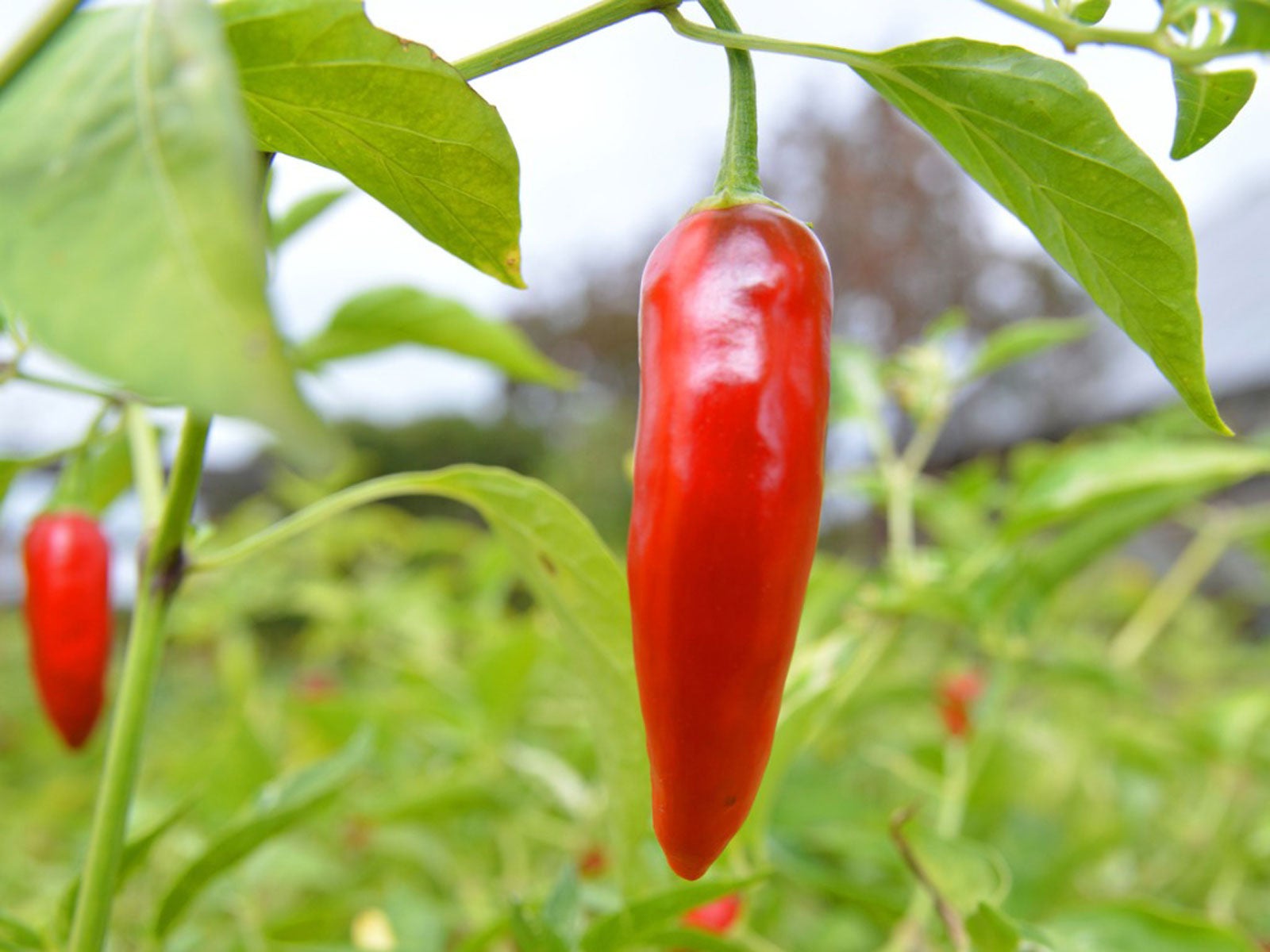Thai Pepper Plant Info – How To Grow A Thai Peppers

If you like five-star, spicy Thai foods, you can thank Thai chili peppers for providing the heat. Thai pepper uses extend into the cuisines of South India, Vietnam, and other Southeast Asian nations as well. The following article contains information on growing Thai peppers for those of us who like that extra kick in our meals.
Are Thai Peppers Hot?
The fruit of the Thai pepper plant is indeed hot, hotter than jalapenos or serranos. To really appreciate their fiery flavors, consider their Scoville rating at 50,000 to 100,000 heat units! Like all hot peppers, Thai chili peppers contain capsaicin which is responsible for their tongue-tingling heat and can burn skin for up to 12 hours.
About Thai Pepper Plants
Thai chili peppers were introduced into Southeast Asia hundreds of years ago by the Spanish conquistadors. The pepper plant produced a plethora of small, 1-inch (2.5 cm.) fruits. The peppers are green when immature and ripen into a brilliant red color.
The small size of Thai chili plants, only about a foot in height (30.5 cm.), makes container growing a perfect fit. The peppers last a long time on the plant and look extremely ornamental.
How to Grow Thai Peppers
When growing, consider the plant's love for heat and humidity and their need for a long growing season of between 100-130 days. If you live in a region with a shorter season, start the chili peppers inside eight weeks prior to the last frost for your area.
Sow Thai chili pepper seeds just under a well-draining seed starting medium. Keep the seeds moist and warm, between 80-85 F. (27-29 C.). A heat mat can help to maintain the temperature. Place the seeds in a southern or southwestern exposed window so they get maximum light or supplement the light artificially.
When all chance of frost has passed for your area and soil temperatures are at least 50 F. (10 C.), harden the seedlings off over the course of a week before transplanting them. Select a site that is in full sun with rich, well-draining soil that has a pH of 5.5-7.0 as well as has had no tomatoes, potatoes, or other Solanum members growing in it.
Gardening tips, videos, info and more delivered right to your inbox!
Sign up for the Gardening Know How newsletter today and receive a free copy of our e-book "How to Grow Delicious Tomatoes".
Plants should be set 12-24 inches (30.5-61 cm.) apart in rows that are 24-36 inches (61-91.5 cm.) apart or space the plants 14-16 inches (35.5-40.5 cm.) apart in raised beds.
Thai Pepper Uses
Of course, these peppers enliven a variety of cuisines as mentioned above. They can be used fresh or dry. Dried pepper wreaths, or other hangings, lend a burst of color to your décor as can a potted Thai pepper plant with its abundant, cheerful red fruit. To dry Thai chili peppers use a dehydrator or an oven on its lowest setting.
If you don’t want to dry the peppers for future use or decoration, store peppers in a plastic bag in the refrigerator for up to a week. Remember when handling these particular peppers to use gloves and never touch your face or rub your eyes.

Amy Grant has been gardening for 30 years and writing for 15. A professional chef and caterer, Amy's area of expertise is culinary gardening.
-
 Zinnias On Repeat: 10 Glorious Cut-And-Come-Again Varieties For Endless Summer Bouquets
Zinnias On Repeat: 10 Glorious Cut-And-Come-Again Varieties For Endless Summer BouquetsThese zinnia varieties keep giving all summer, making them the perfect choice for dedicated cutting gardens – or just the occasional homegrown bouquet.
By Ellen Wells
-
 Create A Romantic Garden Straight Out Of Bridgerton: Regency Era Romance In Your Garden
Create A Romantic Garden Straight Out Of Bridgerton: Regency Era Romance In Your GardenTry some romantic garden ideas straight out of Bridgerton. Flowers and gardens in the Regency era were lush and charming and you can get the same look!
By Bonnie L. Grant